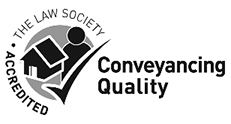There are many different types of mortgages available on the market. A popular option is a fixed rate mortgage. This means you pay a set rate for the length of the deal, which is typically 2 or 5 years. The benefit of this is that it gives you certainty as to the amount of your monthly repayments and therefore makes it easier to plan your monthly outgoings.
Reasons for Re-Mortgaging
The most common reason for re-mortgaging your property is that your current fixed rate mortgage deal is coming to an end. You may want to consider whether or not to re-mortgage and enter into a new fixed rate deal. You may also simply wish to re-mortgage to obtain a better mortgage deal with a lower interest rate than your current lender is offering.
Another reason for re-mortgaging is to borrow more money against your property. This is usually for funding home improvements on your property.
The Re-Mortgaging Process
The first step of re-mortgaging would be for you to search the market. You can either yourself or via a mortgage broker to find the best deal for you. You will then need to obtain a mortgage offer from your new lender and instruct a solicitor to deal with the re-mortgage for you.
The re-mortgaging conveyancing process will involve a number of steps. Firstly your solicitor will obtain details of your existing mortgage, most importantly a redemption figure (the current balance that needs to be repaid). This will include any early redemption or early exit fees that need to be paid. This is to ensure that your new mortgage amount from your new lender is enough to pay off your existing mortgage.
If your property is leasehold, your solicitor will check that the Lease complies with your new lender’s requirements. They'll also ensure your landlord/freeholder is notified of the new mortgage (if required by the Lease).
Depending on who your new mortgage lender is, your solicitor will ascertain whether they require searches to be carried out on your property, in which case your solicitor will obtain the same. Sometimes your new lender will accept indemnity insurance in place of the searches. Again, your solicitor will obtain this.
Your solicitor will check the terms of your mortgage offer and report to you and your lender should any issues arise. Once you are happy with your new mortgage terms and your solicitor is satisfied that everything is correct, they will the arrange for you to sign your new mortgage deed along with any other necessary documents.
Your solicitor will request your mortgage amount from your new lender for a specific date agreed by you for completion.
On the day of completion of your re-mortgage, your solicitor will receive funds from your new lender and will use these to pay off your existing mortgage. If there are any funds due back to you after payment of your existing mortgage and legal fees, they will send this balance back to you.
Following completion, your solicitor will then apply to the Land Registry to update the title to your property. Your existing mortgage lender’s charge will be removed, and your new lender’s charge will be entered onto your property’s title register. Once this has been updated and a copy of the register received, your solicitor will provide proof of this to your new lender.
The re-mortgaging process is generally simpler than a sale/purchase transaction and therefore the conveyancing process is quicker.
If you need advice on re-mortgaging, our Conveyancing Solicitors in Rochdale will be happy to help.



